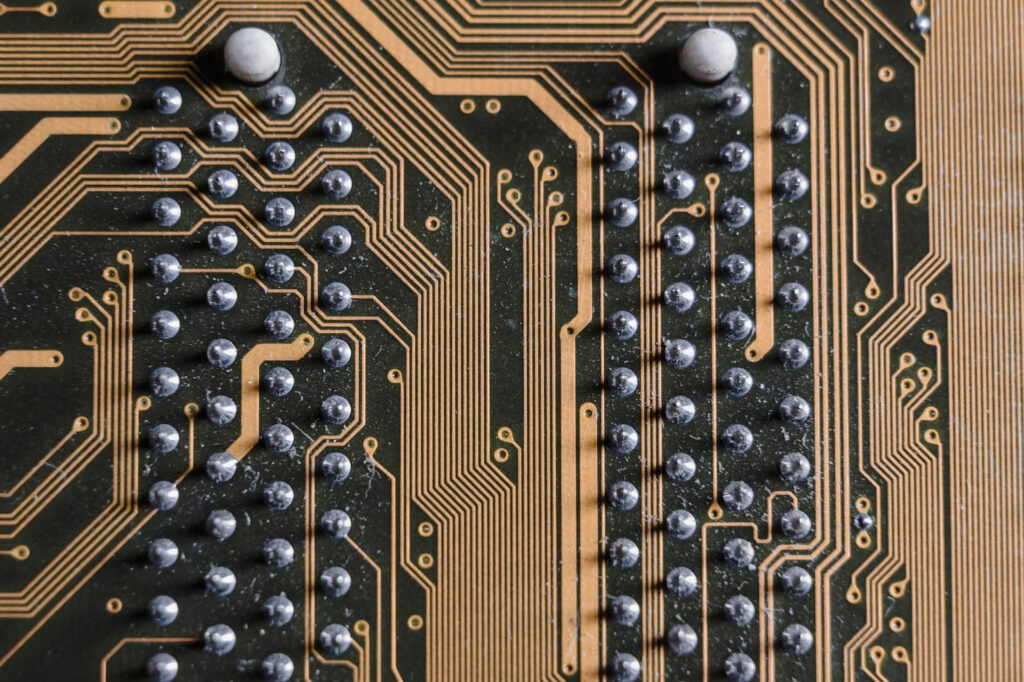
High-frequency printed circuit boards (PCBs) are designed to handle signals with high frequencies, typically above 1 GHz. These boards are used in a wide range of applications, including wireless communication, aerospace and defense, automotive, and medical devices. In order to handle high-frequency signals, high-frequency PCBs require special materials that have different properties than those used in traditional PCBs.
Properties
There are several key properties that are important to consider when selecting high frequency PCB materials. These properties include:
· Dielectric constant: This is a measure of a material’s ability to store electrical energy in an electric field. Materials with a high dielectric constant are better suited for high-frequency applications because they can store more energy in a given space, allowing for smaller and more efficient PCB designs.
· Loss tangent: This is a measure of the energy lost by a material as a signal passes through it. Materials with a low-loss tangent are better suited for high-frequency applications because they can maintain the integrity of the signal, resulting in less distortion and better performance.
· Thermal conductivity: This measures a material’s ability to conduct heat. High-frequency signals generate heat, so materials with high thermal conductivity are better suited for high-frequency applications because they can dissipate the heat more effectively, preventing damage to the board and ensuring reliable performance.
Other properties that may be important to consider include the coefficient of thermal expansion (CTE), moisture absorption, and cost.
Types
There are several types of high-frequency PCB materials available, each with its own set of properties and benefits. Some of the most common types of materials used in high-frequency PCBs include:
· FR-4: This is a widely used PCB material typically used in low to mid-frequency applications. While it is not specifically designed for high-frequency applications, it can still be used for frequencies up to 2 GHz.
· Rogers: Rogers is a brand name for a family of high-frequency PCB materials that are designed specifically for high-frequency applications. Rogers materials typically have a high dielectric constant and low loss tangent, making them ideal for high-frequency applications.
· Teflon: Teflon (polytetrafluoroethylene or PTFE) is another material that is commonly used in high-frequency PCBs. It has a high dielectric constant and low loss tangent, making it well-suited for high-frequency applications. Teflon materials are also known for their low moisture absorption and excellent thermal stability.
Other high-frequency PCB materials include ceramic, liquid crystal polymer (LCP), and polyimide. Each material has its own set of advantages and disadvantages, so it’s important to consider the specific requirements of your application when choosing a material.
Factors to Consider When Choosing High-Frequency PCB Materials
When choosing high-frequency PCB materials, there are several factors that you should consider to ensure that you select the right material for your application. These factors include:
· Frequency range: The frequency range of your application will determine the type of material that you need. Materials with a high dielectric constant are better suited for higher frequencies, while materials with a low dielectric constant are better suited for lower frequencies.
· Signal speed: The speed of the signals that you are transmitting will also impact the type of material that you need. Materials with a low-loss tangent are better suited for high-speed signals because they can maintain the integrity of the signal and minimize distortion.
· Power handling: The amount of power that your board needs to handle will also impact the type of material that you need. Materials with high thermal conductivity are better suited for high-power applications because they can dissipate heat more effectively.
· Size and weight: The size and weight of your board will impact the type of material that you need. Materials with a high dielectric constant are better suited for smaller boards because they can store more energy in a given space.
· Cost: The cost of the material will also be a factor to consider. While some materials may be better suited for high-frequency applications, they may also be more expensive. It’s important to balance the requirements of your application with the cost of the materials.